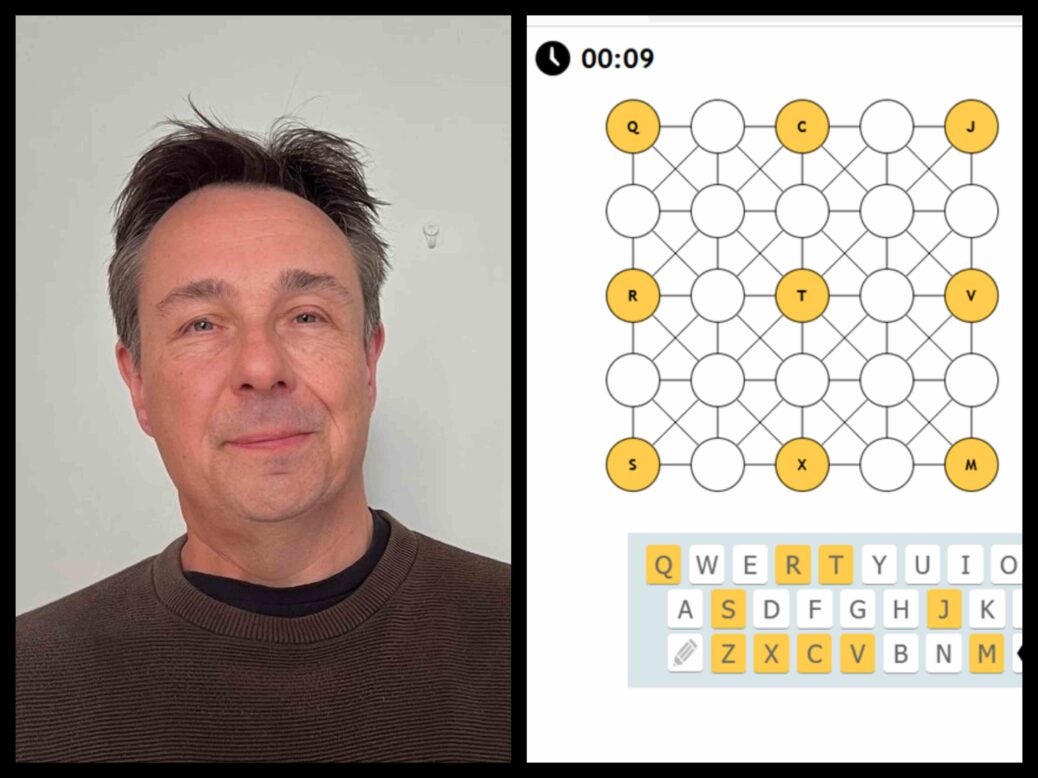
Puzzles have been a staple in newspapers since the first crossword more than 100 years ago and have only grown in popularity in recent years, helping drive engagement and even growth in publishing businesses.
And they are one part of the traditional news and magazine bundle which has survived the shift to digital.
Puzzles are so successful, for the New York Times that it offers a games-only digital subscription boasting more than a million subscribers.
PA Media (formerly Press Association) head of Puzzles Peter Sterling leads a team of 20 full-time staff at PA who “eat, drink and sleep puzzles” and have made successful appearances on TV quiz shows like The Chase, University Challenge and Countdown. The team create the content themselves, with the help of specialist software and freelances, and together put out hundreds of thousands of puzzles.
PA Media puzzle content is tailored to each publication’s readership – there are more “brain training” puzzles for Telegraph readers, for example – but it’s about “getting the balance right” when it comes to difficulty levels and cultural references, Sterling said.
Sterling has been compiling puzzles professionally for 30 years, having first answered an ad in the Evening Standard for a “crossword fanatic” which landed him a job at Central Press Features, later bought by PA, where he worked his way up to editor.
In the decades since he began working, PA’s puzzles team has gone from providing the “raw content” for publishers to put on the page themselves, to providing proofed, page-ready PDFs. It also integrates puzzle content on websites or apps with no added charge.
Puzzling has changed radically since the 1990s
But it’s not just changes to publishing that Sterling has witnessed over his career, he’s also seen the explosion of two major puzzling trends. The first, sudoku, “came out of nowhere” in the 1990s. “It was just a weird, quirky puzzle that was in a couple of papers, having been brought over from Japan, and within six months it was just a must-have in every paper going,” he said. “Now Sudoku is just part of the furniture.”
And more recently, there’s been Wordle. The simple game, in which players have to guess a five-letter word that refreshes each day, was bought by the New York Times in 2022 for a price “in the low seven figures”, it reported at the time, just months after its release.
Sterling said Wordle had had a positive impact on the wider puzzle market, helping to “catch the imagination of people who weren’t perhaps used to doing a regular crossword”.
“I think the quick and snappy nature of Wordle – and the fact it’s quite immediate and easy to grasp – was one of the reasons it’s caught on,” he said. “Sometimes you want to get your teeth into a bigger crossword or puzzle, but other times [you want] puzzles that are more of a quick daily habit.”
Puzzles have helped push the NY Times’ total digital subscriber numbers over the 10m mark, but they aren’t just a useful driver of subscriptions, they also boost engagement metrics.
Puzzle help publishers boost engagement
“One thing that’s particular about puzzles, is that while you can sometimes read an article fairly quickly, the dwell time for people who are trying to solve a puzzle is typically quite a bit longer,” said Sterling.
PA works closely with customers looking at data and finding ways to improve engagement. But puzzles can dramatically increase the amount of time spent with particular brands.
Puzzles also help develop a daily habit tied to the brand, he said, “puzzle players are people of habit often, so they tend to like the routine”.
The pandemic lockdown saw growth in demand for puzzles as sports coverage diminished and papers were keen to fill pages with other content.
“A lot of customers wanted extra puzzles over the pandemic,” said Sterling. “We thought that would fall away after, but readers got used to them. Most papers have either increased pagination or made room for more puzzles on their websites than prior to the lockdown.”
Over the last year, Sterling’s team has been developing new puzzles to keep up reader interest. A puzzle called ‘Niner’, “which is a bit like a code word puzzle, quick and snappy” is coming out soon following the popularity of Wordle, but it’s sudoku, crosswords and codewords that are still the big draw. The futoshiki logic puzzle, which came to the UK from Japan in the mid-2000s, remains popular and PA will release a digital version of this soon.
“Once people get used to a particular puzzle, publishers are very loath to get rid of it because there’s usually an outcry,” said Sterling. It’s this stubborn devotion of puzzlers that he credits with the growth of the puzzle industry over the last 15 years.
While the PA puzzles team are always looking out for new ideas and trying to come up with games that will appeal to players, Sterling said it’s hard to predict the next smash hit.
“You never know what’s going to be the thing that’s going to just explode. We keep coming up with new things and hopefully we’ll find something that will set the world alight,” he said. “We have a lot of puzzles that are slowly growing in popularity, but getting one that’s going to be a complete phenomenon, like Wordle or sudoku, that’s the dream.”
But does Sterling himself still do crosswords for pleasure? “Day to day I avoid crosswords,” he said. “If I have a holiday… I do go back to enjoying them again, particularly if it’s a nice cryptic crossword to get my teeth into.”
Email pged@pressgazette.co.uk to point out mistakes, provide story tips or send in a letter for publication on our "Letters Page" blog

